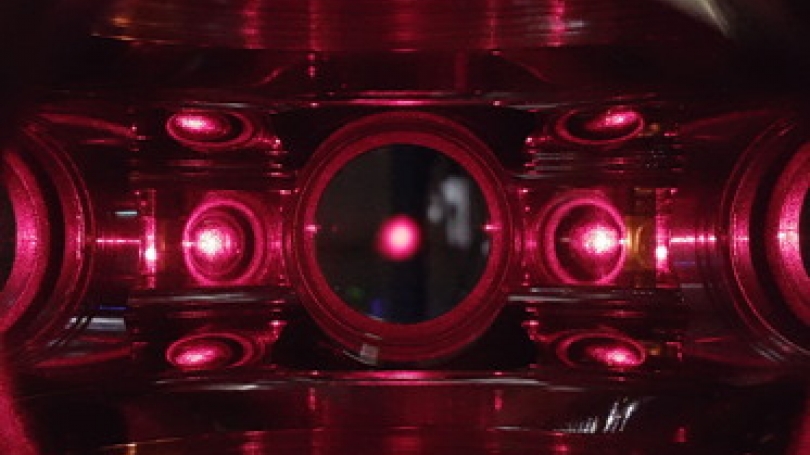
- Undergraduate
- Graduate
- Foreign Study
- Research
- Inclusivity
- News & Events
- People
Back to Top Nav
Back to Top Nav
Back to Top Nav
Back to Top Nav
Back to Top Nav
A new machine for cooling atoms to ultra-low temperatures has come online in the Wright lab. The machine is is somewhat fittingly located directly below the location in Wilder Hall where the pressure of light was first measured at Dartmouth in 1901 by E. F. Nichols and G. F.Hull, and it uses radiation pressure from carefully tuned lasers to capture and cool a dilute gas of lithium atoms. The photograph shows the first stage of the cooling process, where the temperature is less than a thousandth of a degree above absolute zero. After a second stage of cooling to less than a millionth of a degree above absolute zero, the atoms begin to act like "matter waves" rather than point-like particles. Researchers in the Wright lab are using clouds of ultracold atoms to study unusual quantum states of matter (e.g. superfluids that can flow without any friction) and related aspects of quantum many-body physics that are not fully understood.